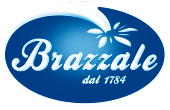Brazzale family is Italy’s oldest dairy company, in uninterrupted activity for at least eight generations, producing cheese and butter since 1784.
Today, the group has over 700 employees, six production facilities distributed in Italy, the Czech Republic, Brazil and China, and a chain of retail stores.
The company’s history is linked to the plateau of Asiago and the Venetian plain; already at the beginning of 1900 the first industrial burrification was realized in Zanè, near Thiene, the Venetian capital of cheese and free market since 1492. The combination of agricultural roots and industrial culture allowed the Brazzale family to reach the years of primacy in national level, both in butter and in aged hard cheese. In 1954 Brazzale founded the Grana Padano Consortium.
Commitment to the seriousness and transparency of the consumer as well as the quality and health of the products has always characterized Brazzale’s history and activity.
Brazzale puts the consumer at the center of its own activity.

